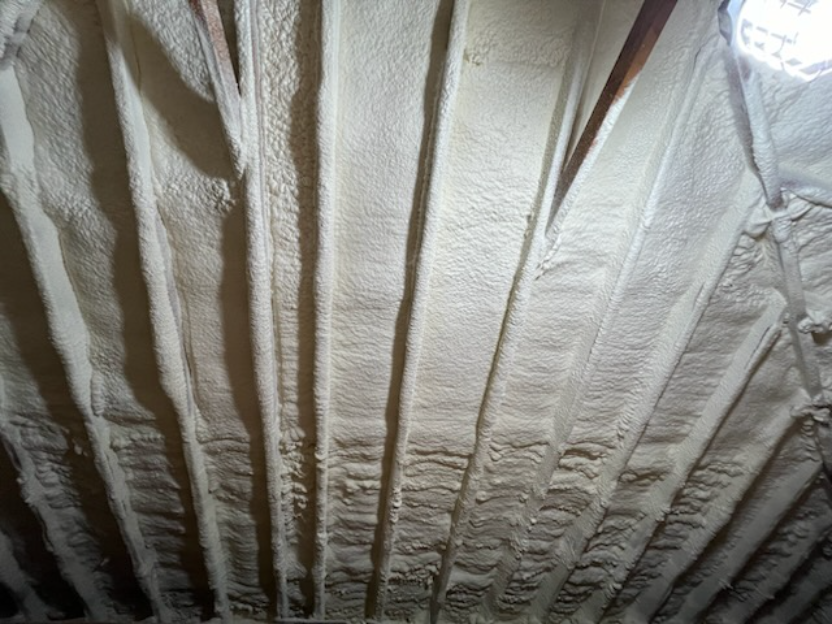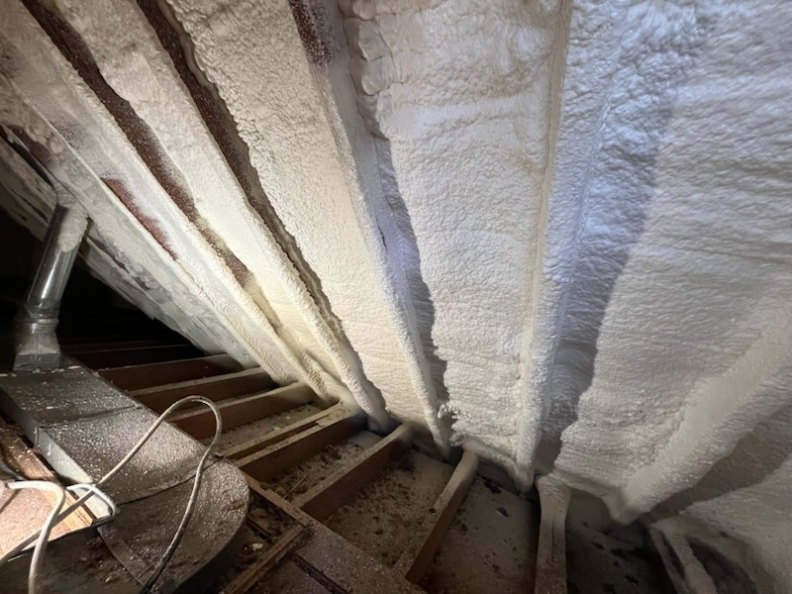
A professional insulation system acts as a barrier in walls, attics, and floors to keep indoor temperatures steady. It blocks cold air from entering during winter and stops hot air from seeping in during summer. This setup reduces the work your heating and cooling systems need to do, which leads to consistent comfort inside your home.
Homeowners in areas like Chicago face extreme weather shifts, from freezing winters to humid summers. A well-installed insulation system handles these changes by maintaining the temperature you set on your thermostat. This article covers the mechanics, benefits, and practical details to help you understand its role in daily life, drawing from hands-on work with local homes by experts at South Chicago Insulation, where extreme cold and heat test building materials every year.
Insulation materials trap air pockets that resist heat flow. When outside temperatures drop, these pockets slow down the transfer of cold into the living space. In hot weather, the same process keeps warmth out. Professional systems use high-quality materials fitted precisely to gaps and joints, which boosts effectiveness.
Take a typical Chicago home built in the 1970s. Without proper insulation, drafts pull in sub-zero air, forcing heaters to run nonstop. A professional upgrade seals those paths, so the home stays warm with less energy use. This direct approach to temperature control starts with assessing your home’s current setup.
In winter, insulation keeps heat inside by minimizing loss through conduction, convection, and radiation. Conduction happens when heat moves through solid materials like walls. Insulation materials with high R-values—a measure of thermal resistance—slow this down. For Chicago’s harsh winters, where average January lows hit around 20 degrees Fahrenheit, this means fewer cold spots in rooms.
These benefits extend into summer months as well, addressing the season’s unique demands.
Summer brings its own challenges with high humidity and temperatures often above 85 degrees. Insulation reflects solar heat away from the home, easing the load on air conditioners. A study from the U.S. Department of Energy notes that proper insulation can cut cooling costs by up to 15% in hot climates, a benefit that applies to muggy Midwest summers too.
Check attic vents before insulating; blocked ones trap moisture and reduce efficiency. Simple fixes like adding screens prevent bigger issues down the line.
Professionals select insulation based on the home’s structure and local climate. Fiberglass batts fit between studs in walls and offer solid performance at a reasonable cost. Spray foam expands to fill irregular spaces, creating an airtight seal ideal for older Chicago bungalows with uneven framing.
Rigid foam boards work well for basements, where moisture is a concern. Each type has an R-value that indicates how well it resists heat flow. Higher numbers mean better insulation, but installation matters just as much.
Here’s a comparison of common types used in Midwest homes:
| Type | R-Value per Inch | Best For | Key Drawback |
|---|---|---|---|
| Fiberglass Batts | 2.9 – 3.8 | Walls and attics | Can settle over time |
| Spray Foam (Closed-Cell) | 6.0 – 7.0 | Air sealing in gaps | Higher upfront material cost |
| Rigid Foam Boards | 3.8 – 5.0 | Basements and exteriors | Needs a vapor barrier |
This table highlights how choices depend on specific needs, like sealing drafts in drafty older homes. Selecting the right type directly influences energy savings, as materials with higher R-values and proper installation help minimize heat loss and gain, leading to lower utility costs.
In humid areas like South Chicago, opt for materials with moisture resistance to avoid mold growth. Testing a small area first reveals compatibility with your home’s setup.

Switching to a professional insulation system pays off in lower utility bills. The ENERGY STAR program reports that homes with recommended insulation levels use 15% less energy for heating and cooling. In the U.S., residential energy use for space conditioning accounts for about 48% of total consumption, according to U.S. Energy Information Administration data from 2022.
For Chicago residents, where heating degrees days—a measure of how cold it gets—average over 5,000 annually, these savings add up. One market analysis shows that insulation upgrades in the Midwest region yield a return on investment within 3-5 years through reduced natural gas and electricity costs.
Assess your home’s age and construction. Homes built before 1980 often lack modern insulation standards, making them prime candidates for upgrades. Look at current energy bills; spikes in winter or summer signal poor performance.
Climate plays a role—Chicago’s freeze-thaw cycles demand durable materials that won’t crack. Budget for the full project, including any prep work like air sealing. Professional audits reveal hidden issues, such as ventilation problems that could trap humidity.
Think about long-term goals. If you plan to stay in the home for years, prioritize high-R-value options. For shorter stays, focus on cost-effective fixes that boost comfort immediately.
Start with high-impact areas like the attic, which accounts for 25% of heat loss in uninsulated homes. This targeted approach maximizes returns without overhauling everything at once.
Yes. By reducing drafts and air leaks, insulation helps limit pollutants from entering your home, resulting in cleaner and more stable indoor air quality.
With proper installation and minimal maintenance, most insulation materials last 20–50 years, continuing to deliver comfort and efficiency over the long term.
Professional insulation systems stabilize indoor temperatures by blocking unwanted heat transfer. They cut energy use, improve comfort in seasonal extremes, and offer lasting value. Evaluate your home’s needs based on bills, structure, and climate to decide on next steps. Consider audits to match solutions to your goals.
Explore options tailored to your setup. South Chicago Insulation provides guidance through consultations. Reach out via email at [email protected] or call (779) 803-8025 to discuss your home’s temperature challenges. This step helps identify practical improvements without commitment.
Yes, it adapts well to older structures. Professionals modify techniques for settling foundations or irregular walls, ensuring a tight fit without major renovations.
Expect a drop of 5-10 degrees in indoor swings. In Chicago winters, rooms stay closer to thermostat settings, cutting heater cycles by 20-30%.
It helps by keeping attics warmer, which melts less snow on the roof edge. Combine it with proper ventilation for best results in snowy conditions.
DIY works for simple spots, but pros handle complex areas like crawlspaces to avoid safety risks and ensure even coverage.
Aim for R-38 to R-49 in attics and R-13 to R-19 in walls, per local building codes adjusted for cold snaps and humid summers.